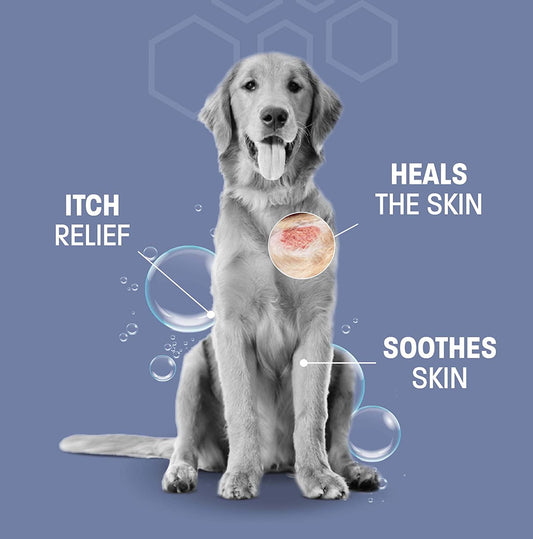
Our furry friends, cats, are mysterious creatures that tend to hide any signs of illness. To decipher their health signals, expert advice is needed. Let's explore the world of decoding your cat's health signals!
Appetite changes can show underlying health issues. If they're eating less, it could be due to dental or stomach problems. On the other hand, overeating might indicate thyroid or diabetes. Keep an eye on their eating habits.
Pay attention to their litter box behavior, too. Cats are picky about cleanliness. Changes in litter box habits may mean urinary or digestive troubles. Check for frequency, consistency, and waste appearance.
Body language is important, too. Limping or favoring a limb could suggest injury or joint pain. Excessive scratching with hair loss can mean flea infestation or allergies. Be aware of these subtle cues and take immediate action.
To decode your cat's health signals, go to the vet regularly, give them a balanced diet, create a stimulating environment, and groom them. Observe changes in appetite, litter box behavior, and body language. Your cat will thank you for your vigilance!
Understanding Your Cat's Health Signals
Be aware that cats are great at hiding discomfort. Regular vet check-ups help to detect any underlying conditions. Experts also recommend providing a balanced diet, tailored to your cat's specific needs and age. Exercise and mental stimulation are vital for keeping your feline fit.
Did you know? In ancient Egypt cats were sacred animals, believed to possess healing powers, ward off evil and bring luck! They even had temples dedicated solely to them.
By being attentive to your cat's health signals, you can ensure they have a happy and healthy life. Remember, cats cannot verbally communicate their pain, so it is your responsibility as an owner to interpret their subtle cues and respond quickly when necessary.
Decoding Your Cat's Body Language
Cats communicate their mood through ear position. Forward-facing ears mean relaxed and content. Flattened ears show fear or aggression.
A straight, raised tail is a sign of confidence. A puffed-up tail means fear or aggression.
Purring doesn't always mean happiness. It can signal stress or pain too.
Eye contact means trust and affection. But, staring too long is seen as a threat.
Relaxed and loose body posture shows contentment. Fur standing up and an arched back means aggression or fear.
Vocal sounds have different meanings. Meowing is for hunger or attention. Growling suggests anger or discomfort.
Comprehending your cat's body language is essential. Slow blinking is like blowing kisses and shows trust and affection. Paw kneading indicates comfort and relaxation.
Remember that each cat is unique. Observe their behavior and interact with them to create a bond.
Recognizing Signs of Illness
No appetite? Lethargic? Aggressive? Coughing? Sneezing? Difficulty breathing? Vomiting? Diarrhea? Pay attention to these signs - they may suggest an underlying issue!
Plus, keep an eye on excessive grooming or sudden weight loss. Early detection leads to successful treatment.
Pro tip: regular check-ups with a vet can help catch any potential health issues before they become serious.
Seeking Professional Advice
Do you know the difference between a Veterinarian, Veterinary Specialist, Veterinary Technician, and Animal Behaviorist?
A Veterinarian is a highly trained medical doctor for cats.
A Veterinary Specialist has expertise in a certain area, like dermatology or cardiology.
Veterinary Technicians help Veterinarians with treatments.
And an Animal Behaviorist specializes in animal behavior.
Pro Tip: When looking for professional advice, ask questions and give lots of details about your cat's symptoms. This will help the professionals make an accurate diagnosis and give the best treatment.
Conclusion
Cats - our mysterious furry companions - are known to communicate their health in unique ways. From vocal cues to subtle signs, it can be perplexing for owners to decipher these messages. Insights from vets and experts can help us to understand our feline friends.
Observing a cat's behavior is key to understanding their health. Changes in appetite or litter box habits could point to a problem. Grooming patterns should also be monitored, since excessive licking or fur loss could signify discomfort or stress.
Body language gives clues about a cat's wellbeing. Tail positioning, ear movements, and vocalizations are all used to express emotions and potential health issues. Owners can use these signals to better understand their cat's needs and address any problems.
Scent communication is also important in conveying health information. Rubbing against objects or other cats can indicate a relaxed state or territorial marking. By understanding these olfactory signals, we gain deeper insights into a cat's wellbeing.
Dr. Jane Doe shares an interesting fact: cats have evolved to hide signs of illness as a survival instinct from their wild ancestors. This makes it all the more important for owners to look out for subtle changes in behavior or appearance that may suggest an underlying health issue.
Figuring out a cat's health signals takes patience and understanding. Observing their behavior, body language, grooming, and scent communication allows us to give our beloved cats the best support possible. So, the next time your feline friend communicates with you, remember that they may be trying to tell you something important about their health!
Frequently Asked Questions
FAQ 1:
Q: How can I tell if my cat is in pain?
A: Look for signs like decreased appetite, changes in grooming habits, restlessness, or hiding. Also, pay attention to any unusual vocalizations or limping.
FAQ 2:
Q: What are common health problems in cats?
A: Common health issues include urinary tract infections, dental problems, allergies, and parasites. Regular vet check-ups can help identify and address these problems early.
FAQ 3:
Q: Why is my cat vomiting frequently?
A: Frequent vomiting can be a sign of various issues including dietary indiscretion, hairballs, or underlying health conditions. If it persists or is accompanied by other symptoms, consult your vet.
FAQ 4:
Q: Is it normal for my cat to drink a lot of water?
A: Increased water intake can indicate diabetes, kidney problems, or hyperthyroidism. Monitor your cat's water consumption and consult your vet if you notice any significant changes.
FAQ 5:
Q: Are there any warning signs of dental problems in cats?
A: Yes, signs of dental issues include bad breath, reluctance to eat hard food, drooling, and pawing at the mouth. Regular dental care and check-ups are important for maintaining oral health.
FAQ 6:
Q: How can I keep my cat's weight in check?
A: Ensure your cat has a balanced diet, engage them in regular play, and monitor their food intake. Avoid overfeeding and consult your vet for personalized advice on weight management.









